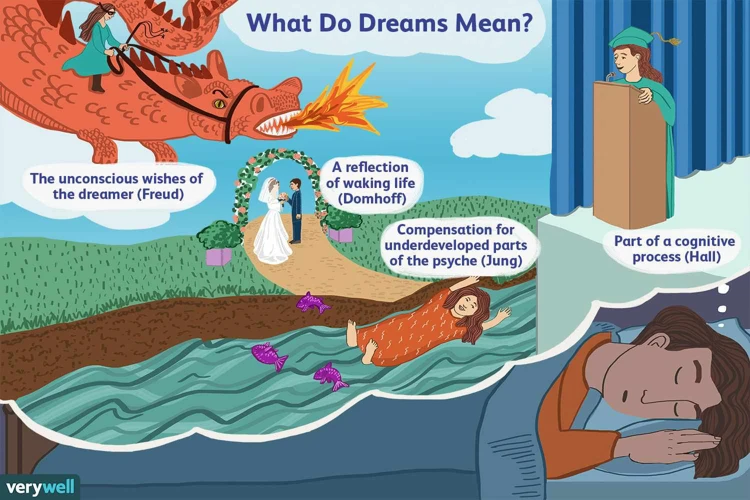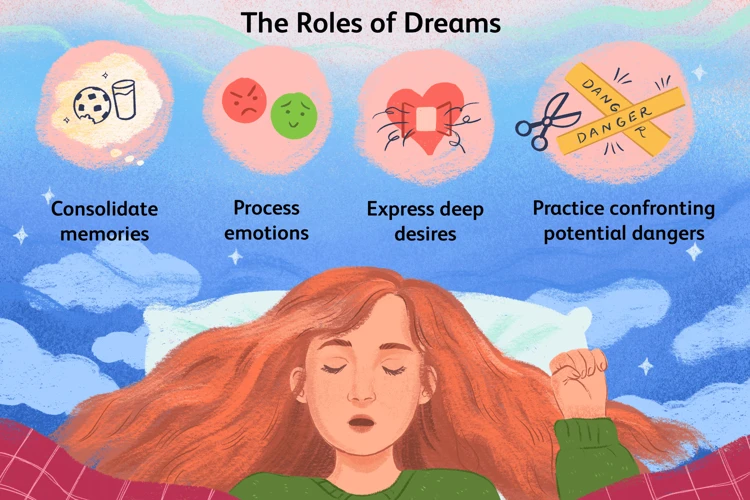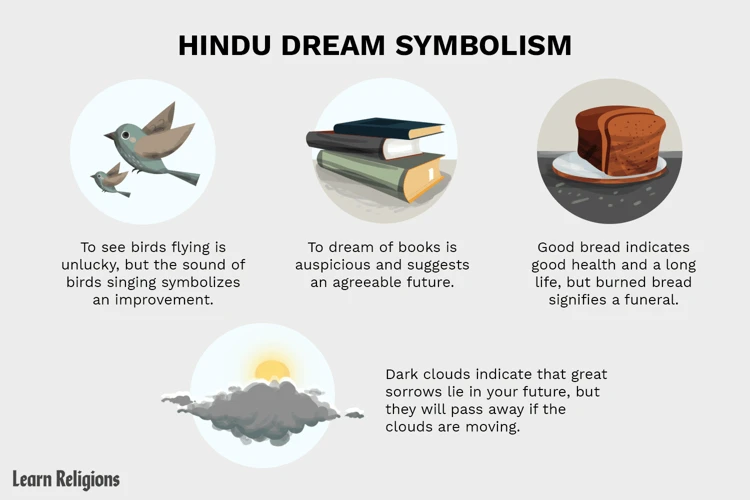Have you ever experienced the sensation of dreaming within a dream? It’s a curious occurrence that often leaves us pondering its meaning and significance. What does it imply when our subconscious ventures into multiple layers of dreamscape? In this intriguing article, we will delve into the mystical realm of dreaming in a dream, uncovering its definition, exploring various theories surrounding its existence, and deciphering the common experiences associated with this phenomena. Join us as we attempt to unravel the enigmatic nature of dreaming within a dream and discover the hidden messages that lie within.
Dreaming Within a Dream: What Does it Mean?

1. Definition of Dreaming in a Dream: Dreaming in a dream, also known as a nested dream or a dream within a dream, refers to the experience of having a second layer of dreaming while already in a dream state. It is a phenomenon where the dreamer becomes aware of being in a dream and then transitions into another dream scenario within that initial dream. This recursive dreaming creates a sense of alternate realities, blurring the lines between the dream world and reality itself.
2. Theories Surrounding Dreaming in a Dream: Dreaming in a dream has fascinated philosophers, psychologists, and spiritualists throughout history. While there is no definitive consensus, several theories attempt to explain its meaning. One theory suggests that dreaming within a dream reflects the complexity and depth of the dreamer’s subconscious mind. Another viewpoint proposes that it may indicate a heightened level of self-awareness and introspection. Some believe that nested dreams serve as a bridge between the conscious and unconscious mind, facilitating the exploration of unresolved emotions, fears, or desires.
3. Common Experiences of Dreaming in a Dream: The experiences of dreaming within a dream can vary from person to person, but there are some common themes. For instance, individuals may find themselves realizing they are dreaming within a dream and attempt to manipulate the dream environment. This can lead to a sense of control or even lucid dreaming within the nested dream. Additionally, feelings of disorientation, confusion, or a sense of being trapped within layers of dreams are often reported. It is not uncommon for nested dreams to evoke strong emotions and leave a lasting impression on the dreamer’s psyche.
1. Definition of Dreaming in a Dream
Dreaming in a dream, also known as a nested dream or a dream within a dream, refers to the experience of having a second layer of dreaming while already in a dream state. It is a phenomenon where the dreamer becomes aware of being in a dream and then transitions into another dream scenario within that initial dream. This recursive dreaming creates a sense of alternate realities, blurring the lines between the dream world and reality itself.
2. Theories Surrounding Dreaming in a Dream
2. Theories Surrounding Dreaming in a Dream:
– Subconscious Mind: One theory suggests that dreaming within a dream is a manifestation of the subconscious mind at play. According to this viewpoint, nested dreams can be seen as a reflection of the deep layers of our psyche, where unresolved emotions, fears, and desires reside. It is believed that the subconscious mind uses nested dreams as a way to communicate and process these underlying thoughts and feelings.
– Parallel Realities: Another theory proposes that dreaming within a dream may indicate the existence of parallel realities or multiple dimensions. In this perspective, nested dreams serve as a doorway to alternate realms, allowing the dreamer to explore different versions of reality. This theory aligns with the concept of the multiverse, where infinite possibilities coexist simultaneously.
– Spiritual Significance: Some believe that dreaming within a dream holds spiritual significance. It is seen as a bridge between the physical and spiritual realms, providing access to higher consciousness and spiritual insights. Nested dreams are thought to offer guidance, messages, or symbolism that can aid in personal growth and spiritual development.
– Unresolved Issues: There is also a belief that dreaming within a dream may signify unresolved issues or unfinished business in the dreamer’s life. The nested dreams could represent layers of unaddressed emotions, unresolved conflicts, or hidden desires that need acknowledgement or resolution. By recognizing and interpreting these nested dreams, individuals may gain valuable insights into their waking life and work towards personal growth and self-discovery.
Explore more dream symbolism in our article about the meaning of waterfalls in dreams.
3. Common Experiences of Dreaming in a Dream
3. Common Experiences of Dreaming in a Dream:
– A sense of nested realities: When dreaming within a dream, individuals often experience a profound awareness of the layered nature of their dreamscape. They may perceive themselves as existing in multiple dream environments simultaneously, creating a surreal and complex narrative structure.
– Manipulation of dream scenarios: One common experience during nested dreams is the ability to manipulate the dream environment. Dreamers may become lucid within the nested dream, allowing them to consciously alter elements or direct the course of events. This heightened sense of control can lead to exciting and transformative experiences within the dream state.
– Feelings of confusion and disorientation: Dreaming within a dream can also evoke feelings of confusion and disorientation. As the dreamer transitions between dream layers, a sense of lostness or being trapped within dreams can emerge. This can contribute to an overall sense of perplexity and challenge the dreamer’s sense of reality and identity.
– Emotional intensity: Nested dreams have been noted to evoke strong emotions in individuals. Whether it’s fear, excitement, joy, or sadness, the emotions experienced within the nested dream can be intensified. This emotional intensity can leave a lasting impression on the dreamer, influencing their waking thoughts and feelings.
Exploring the complex terrain of dreaming within a dream provides insights into the intricate workings of the human mind and offers a glimpse into the interconnected nature of our conscious and subconscious states.
The Psychology Behind Dreaming in a Dream

1. The Subconscious Mind at Play: Dreaming within a dream provides a unique window into the workings of the subconscious mind. According to psychologists, nested dreams may occur when our subconscious desires, fears, or unresolved conflicts are given expression. The subconscious mind uses the symbolism and imagery of dreams to communicate with the conscious mind, offering insights into our deeper thoughts and emotions. By exploring the various layers of a dream within a dream, we can gain a better understanding of our hidden desires, anxieties, and motivations.
2. Symbolism and Interpretation: One of the key aspects of understanding the psychology behind dreaming within a dream is the analysis of symbolism and interpretation. Each element within the nested dream holds significance and can be interpreted to reveal underlying meanings. Symbols may represent specific emotions, experiences, or aspects of our lives. For example, dreaming about a waterfall may symbolize emotional cleansing and renewal. By examining the symbolism within nested dreams, psychologists can unravel the subconscious messages being conveyed and assist individuals in gaining insight into their own psyche. (For more on the symbolism of dreams, you can read about the biblical meaning of being drunk in a dream.)
1. The Subconscious Mind at Play
1. The Subconscious Mind at Play: Dreaming in a dream provides a unique window into the workings of our subconscious mind. When we dream within a dream, our subconscious has the opportunity to express itself and communicate symbolically. As we explore the inner layers of our nested dreams, we may encounter hidden desires, unresolved emotions, or repressed memories that are trying to surface. Nested dreams can act as a playground for the subconscious mind, allowing it to process and integrate these fragments of our psyche. It is through this intricate interplay of symbols and narratives that we gain insight into our subconscious desires, fears, and motivations. The subconscious mind at play in nested dreams helps us uncover deeper layers of ourselves that may not be readily accessible in our waking life.
2. Symbolism and Interpretation
2. Symbolism and Interpretation:
Dreaming within a dream often involves vivid imagery and powerful symbolism. Deciphering these symbols is key to understanding the deeper meaning behind the nested dream. Here are a few examples of common symbolism found in dreams within dreams:
– Falling: Falling in a dream can represent a loss of control, fear of failure, or a sense of insecurity. When experienced within a dream, it may suggest a lack of grounding or stability in one’s waking life.
– Being Chased: Being chased in a dream can symbolize running away from a problem or avoiding confrontation. In the context of dreaming within a dream, it may suggest a recurring issue or unresolved situation that keeps resurfacing.
– Flying: Flying within a dream represents a sense of freedom, liberation, and the ability to rise above challenges. In a nested dream, it could signify the dreamer’s desire for escapism or the need to navigate multiple layers of consciousness.
– Finding Yourself in Familiar Places: Discovering oneself in familiar locations during a dream within a dream could indicate a sense of nostalgia, longing, or a need for comfort. It may also signify revisiting unresolved emotions or past experiences.
Interpreting these symbols requires personal reflection and context. Dreams within dreams can offer valuable insights into our subconscious thoughts and emotions, guiding us towards self-discovery and personal growth.
Interpreting Dreams Within Dreams: Symbolic Meanings

1. Falling Within a Dream: When experiencing the sensation of falling within a dream, it can symbolize a lack of control or feelings of insecurity in your waking life. This dream may signify a fear of failure or the need to let go of certain aspects of your life.
2. Being Chased in a Dream: Being chased in a dream often represents anxiety, fear, or the avoidance of something in your daily life. It can symbolize unresolved conflicts or the feeling of being overwhelmed by responsibilities. Exploring the source of the chase may help uncover hidden fears or unresolved issues.
3. Flying Within a Dream: Flying in a dream is often associated with freedom, liberation, and a sense of empowerment. It can symbolize breaking free from limitations or exploring new possibilities. This dream may suggest that you are ready to take control of your life and soar above challenges.
4. Finding Yourself in Familiar Places: Dreams within dreams can also feature familiar places from your waking life. These settings hold symbolic meanings that may carry significant personal associations. Exploring the emotions and memories linked to these familiar places can provide valuable insights into your subconscious mind.
By understanding these symbolic meanings, you can gain a deeper understanding of yourself and the messages your subconscious is trying to convey through nested dreams. Remember that dream interpretation is highly subjective, and it’s important to consider your own personal experiences and emotions when deciphering the meaning behind dreams within dreams.
1. Falling Within a Dream
1. Falling Within a Dream: Falling is a common and recurring theme within dreams and holds symbolic meaning when experienced within a dream. It is often associated with a loss of control, vulnerability, or a fear of failure. Falling within a dream can reflect an individual’s insecurities, anxieties, or the inability to maintain stability in their waking life. It may represent the need for support, a desire for guidance, or the fear of taking risks. In some cases, falling within a dream can also indicate a lack of grounding or a need to relinquish control and trust in the process of life. The interpretation of falling within a dream
Subscribe to Our Newsletter
Sign up to receive the latest news and updates.
2. Being Chased in a Dream
2. Being Chased in a Dream: One of the most common experiences in dreams within a dream is the sensation of being chased. This recurring theme often sparks feelings of fear, anxiety, and urgency. When we find ourselves being pursued in a nested dream, it may symbolize unresolved conflicts or obstacles in our waking lives. The act of being chased could represent a fear of confronting these challenges or a desire to escape from certain situations. It is essential to pay attention to the details surrounding the chase, such as who or what is chasing us and the environment in which it takes place. These elements can provide valuable insights into the underlying emotions and potential solutions to the issues we face. Exploring the meaning behind being chased in a dream can bring clarity and help us confront our fears head-on in both our dreams and waking lives.
3. Flying Within a Dream
3. Flying Within a Dream: One of the most exhilarating experiences within a dream is the ability to fly. When flying within a dream, individuals often report a feeling of freedom, empowerment, and liberation. It is a symbol of transcendence, breaking the constraints of earthly limitations and soaring through the skies. In these dreams, the dreamer may have complete control over their flight, effortlessly gliding through the air or performing daring aerial maneuvers. Flying dreams can signify a sense of ambition, confidence, and the desire for personal growth. They can also represent a desire to escape from real-world challenges or to explore new possibilities. Flying within a dream provides a profound sense of awe and wonder, allowing the dreamer to temporarily escape the boundaries of reality and experience the exhilaration of unbounded freedom.
4. Finding Yourself in Familiar Places
4. Finding Yourself in Familiar Places: One of the common experiences in dreaming within a dream is finding oneself in familiar places. It can be both comforting and perplexing to encounter locations from our waking lives within a nested dream. This phenomenon often sparks a sense of déjà vu as we navigate through dreamscapes that resemble our homes, workplaces, or cherished childhood spots. The presence of familiar places in nested dreams may symbolize a deep connection between our conscious and subconscious minds, reflecting unresolved emotions or significant memories tied to these locations. Exploring these familiar settings within a dream can offer valuable insights into our inner world and provide an opportunity for self-reflection and personal growth.
Methods to Enhance Dream Recall with Dreaming in a Dream
1. Dream Journaling: One effective method to enhance dream recall when experiencing dreaming within a dream is to keep a dream journal. As soon as you wake up from a nested dream, take a few moments to jot down the details and emotions you remember. This practice helps reinforce memory and allows you to reflect on recurring symbols or themes. Keep the journal by your bedside for easy access and write in it consistently, even if it’s just a few bullet points or keywords. By consistently recording your dreams, you can train your mind to better remember and recall the intricate details of your dream experiences.
2. Lucid Dreaming Techniques: Another technique to improve dream recall, especially in the context of dreaming within a dream, is to develop the skill of lucid dreaming. Lucid dreaming is the state of being aware that you’re in a dream while you’re still actively dreaming. By learning lucid dreaming techniques such as reality checks, reality testing, or visualization exercises, you can increase your chances of becoming aware within your dreams. When you have this awareness, take note of the fact that you are dreaming within the nested dream. This heightened awareness can help you remember and recall the experiences within your nested dream with more clarity once you wake up.
Enhancing dream recall is a valuable tool for understanding the deeper meanings and symbols embedded within your dreams, even when they occur within nested dreams. By practicing dream journaling and exploring lucid dreaming techniques, you can unlock the fascinating world of your dreams and gain a deeper understanding of both your subconscious mind and the intricate nature of dreaming within a dream.
1. Dream Journaling
1. Dream Journaling: Keeping a dream journal is a powerful tool for enhancing dream recall, including dreams within dreams. By recording your dreams immediately upon waking, you can capture the details and emotions that may fade quickly from your memory. Documenting nested dreams can help you identify patterns, symbols, and recurring themes. It’s important to write down as much as you can remember, even if it seems insignificant. Use descriptive language to bring your dreams to life on the pages of your journal. Over time, you may start to notice connections between your dreams and your waking life, allowing for a deeper understanding of the meaning behind your surreal experiences. Reviewing your dream journal regularly can help train your mind to become more attuned to remembering dreams and recognizing the occurrence of dreaming within a dream.
2. Lucid Dreaming Techniques
2. Lucid Dreaming Techniques: Lucid dreaming refers to the state of being aware and conscious within a dream, allowing dreamers to actively participate and influence their dreams. There are various techniques that can be practiced to enhance lucid dreaming abilities. One popular technique is reality testing, which involves regularly questioning and testing the reality of one’s environment during waking hours. This habit can carry over into dreams, increasing the likelihood of recognizing when one is dreaming. Another technique is keeping a dream journal, where dreamers record their dreams upon waking. This helps improve dream recall and increases self-awareness within dreams. Additionally, practicing meditation and visualization exercises before sleep can promote a deeper sense of relaxation and focus, leading to a higher chance of lucid dreaming. Exploring and experimenting with different techniques can help individuals unlock the potential of lucid dreaming and engage in fascinating and meaningful dream experiences.
Conclusion
In conclusion, dreaming within a dream is a fascinating and enigmatic experience that continues to intrigue and baffle us. While the exact meaning and interpretation of nested dreams may vary from person to person, it is clear that they offer a glimpse into the complexities of our subconscious mind. Whether it signifies heightened self-awareness, a connection between the conscious and unconscious, or the exploration of unresolved emotions, dreaming within a dream is a phenomenon worth exploring. By understanding the symbolism and common experiences associated with nested dreams, we can gain valuable insights into ourselves and our inner workings. So, the next time you find yourself slipping into a dream within a dream, embrace the journey and unravel the hidden messages that lie within this surreal realm of dreaming.
Frequently Asked Questions
1. Can anyone experience dreaming within a dream?
Yes, anyone can experience dreaming within a dream. It is a naturally occurring phenomenon that can happen to individuals of all ages and backgrounds.
2. Is dreaming within a dream the same as lucid dreaming?
No, dreaming within a dream and lucid dreaming are different experiences. Dreaming within a dream refers to the occurrence of multiple layers of dreams, while lucid dreaming is the state of being aware and conscious within a dream.
3. Are there any potential meanings or messages hidden within nested dreams?
Yes, nested dreams can hold symbolic meanings and messages. They often reflect the unconscious thoughts, emotions, and desires of the dreamer. Analyzing the content of these dreams can provide valuable insights into one’s psyche.
4. Can dreaming within a dream have any physical or psychological effects?
Dreaming within a dream does not have any direct physical effects. However, it can have psychological impacts such as influencing mood, triggering introspection, or enhancing dream recall and analysis.
5. Are nested dreams more common during certain stages of sleep?
Nested dreams can occur during various stages of sleep, including both REM (rapid eye movement) and non-REM stages. However, these dreams are more likely to happen during REM sleep, which is associated with vivid and active dreaming.
6. Can dream interpretation techniques be applied to nested dreams?
Yes, dream interpretation techniques can be applied to nested dreams just like any other dream. Symbolism, emotions, and personal associations can be analyzed to uncover the underlying meaning of the dream within a dream.
7. Can external factors influence the occurrence of dreaming within a dream?
Yes, external factors such as stress, sleep deprivation, or certain sleep disorders can influence the likelihood of experiencing nested dreams. These factors can disrupt the sleep cycle and increase the chances of vivid and complex dream experiences.
8. Is there any significance to the order or number of layers within a nested dream?
The order or number of layers within a nested dream does not hold universal significance. However, it may have personal meaning based on the dreamer’s unique experiences, emotions, and subconscious associations.
9. Can practicing lucid dreaming techniques help induce dreaming within a dream?
Practicing lucid dreaming techniques can potentially increase the chances of experiencing dreaming within a dream. Lucid dreamers often have a heightened level of self-awareness, which can lead to the recognition and exploration of nested dream scenarios.
10. Are nested dreams more likely to be surreal or fantastical in nature?
Nested dreams can vary in nature. While some may be surreal or fantastical, others can mirror the reality of the waking world or delve into more symbolic and abstract realms. The content and themes of nested dreams depend on the individual’s subconscious mind and personal experiences.










